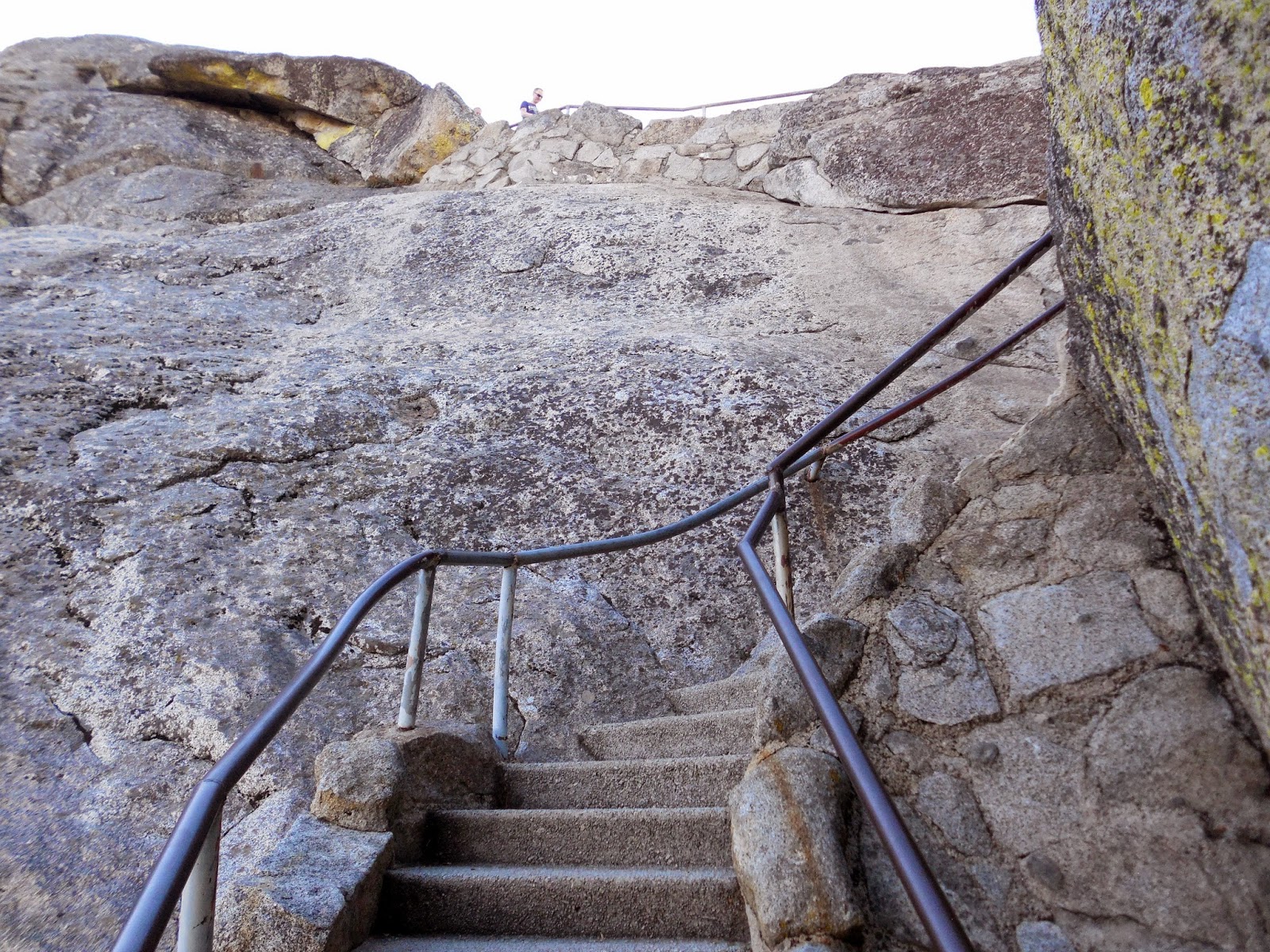 Yes, if you look at the date, you'll see it was Thanksgiving Day in America. Honestly, there's no rule that says you have to stay home and eat turkey. Sometimes you just want to do something else. Instead of preparing and eating a big bird in a small RV, we went to see the big trees. (Actually, they call them "giants", and they are really, really, really tall!)
Yes, if you look at the date, you'll see it was Thanksgiving Day in America. Honestly, there's no rule that says you have to stay home and eat turkey. Sometimes you just want to do something else. Instead of preparing and eating a big bird in a small RV, we went to see the big trees. (Actually, they call them "giants", and they are really, really, really tall!) Every other time we were in the area, the weather at Sequoia and Kings Canyon National Parks wasn't very cooperative. Generals Highway had always been closed because of snow. But the Sierra Nevadas only have 25% of the snowpack they did last year, so the road's still open. We headed for the park(s). Kings Canyon is adjacent to but bigger than Sequoia. Three times as many people go to Sequoia. (I'm sure you wanted to know that.)
The majority of both parks is wilderness, so most visitors see the parks by just driving the Generals Highway through the giant trees, stopping to get up close to some of the really famous ones. We came in the Ash Mountain Entrance and drove to the Foothills Visitor Center for info and passport stamps.
The old road went under Tunnel Rock. We walked under the rock and through the tunnel (or is that redundant?)
At the Hospital Rock viewpoint we swapped cameras with another couple. (I really hate trying to figure out someone else's camera. It's like getting out of someone else's car. You know there's a door handle, but it's not where the one your hand automatically goes to, and you feel sort of stupid.) I have no idea why it's called "Hospital Rock"--apparently no one else does either because I couldn't find a reference to it in my admittedly cursory Google search.
If you think there's a problem seeing the forest because of the trees, you should try taking a picture of these trees. If you try to show how tall the trees are, you can't see the base of the tree. If you get the bottom, you cut off the top. If you want people for comparison, they don't need to smile.
Near the Giant Forest Museum, we took the turnoff to Moro Rock, not having a clue what we were getting into. It's a granite dome with amazing views of the western half of Sequoia NP and the Great Western Divide. The trail to the top was built by the CCC in the 1930s. It has 400 steps with a 300' elevation gain, so a lot of people just get back in their cars and leave. (I don't think George read that part on the sign, which was fine because I wanted to climb.)Four hundred is a LOT of stairsteps! You climb and climb and then climb some more, and every time you think you're getting near the top, you turn a corner and there are more steps. The view is great though so you keep going!
Sometimes you have to wait for someone else to come down. (That's okay--you can catch your breath, from the exercise and the scenery!)
This trail was my favorite part of the whole park. I don't think the CCC guys put in handrails and guardrails... but I'm grateful to whoever did!
When we finally got to the top, there's a wicked step down that I didn't notice because I was busy looking at the top of the rock. Typical klutzy me with the sloppy ankles took a step down, fell, rolled from ankle to hip to shoulder, just like I'd practiced or something. (No, I don't know who these guys are. And no, they didn't fall, even not looking where they stepped. And no, I wasn't sore later--thanks for asking.)
Top of Moro Rock:
View from the top--Great Western Divide on one side and the road we came up on the other:
What goes up must come down. Oops! forgot this part! (It's better when you don't look all the way down at once because straight down wouldn't be much fun.)
We headed back to the Generals Highway. (That would be Civil War Generals Sherman and Grant. They each have trees named after them too. Wonder why they have to share the highway?) We stopped a few times to get up close to some of the giants. I'm pretty puny next to the roots of the Buttress Tree. I wonder what it sounded like when this guy fell down??
One of the giant sequoias is so big you can drive a truck through it. Okay, not a semi, but Tunnel Tree has a base diameter of 21', with an 8' high tunnel.
The General Sherman Tree is the largest. It's not the tallest, nor does it have the longest circumference, but it's the heaviest. My high school physics class was a long time ago, but I'm pretty sure we didn't calculate the weight of trees. Probably the height, but not the weight. So rather than try to do it myself, the NPS website says there's 52,500 cubic feet (1486.6 cubic meters) of wood. (I figure they ought to know.) So here's the General Sherman Tree, top and bottom--use your imagination to put it together.
Amazing that all those huge trees came from little cones like this!
More pictures here: Sequoia National Park
I want to come back and check out more of Kings Canyon next time, including General Sherman's tree.




.JPG)


.JPG)
.JPG)
.JPG)


.JPG)











.JPG)

.JPG)

.JPG)
.JPG)

.JPG)



.JPG)


.JPG)



.JPG)
.JPG)
.JPG)
.JPG)




.JPG)
.JPG)
.JPG)
.JPG)
.JPG)




.JPG)